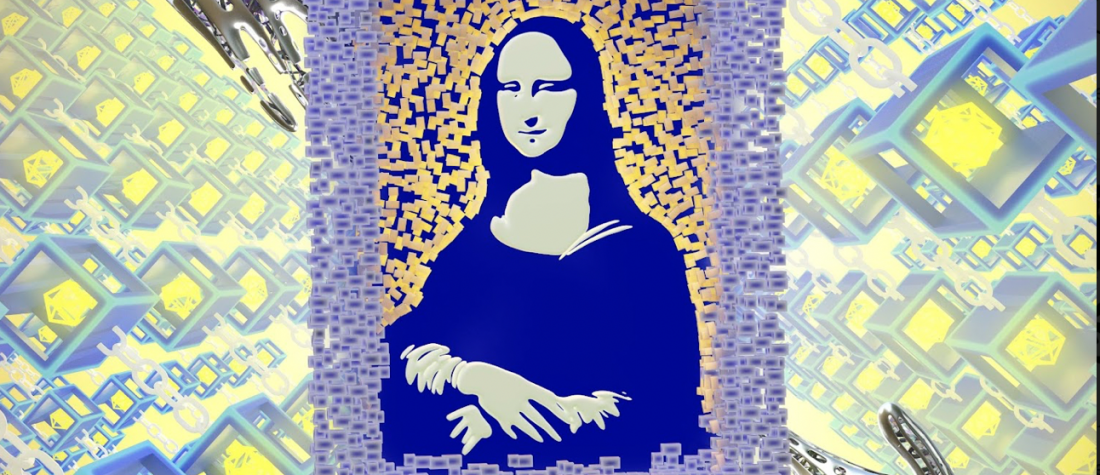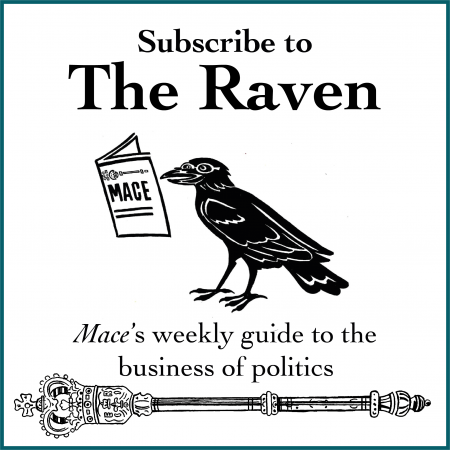“I personally minted the first cinematic films on the blockchain in March last year. In NFT terms that’s like a decade ago. I did it because I was like, why is no one doing this?”
That’s J Harry Edmiston, a former gallery owner, a tech guru and a marketing connoisseur. He is also founder and director of CreativeWorkStudios, a marketing company that “connects arts, brands and humans”. In essence: Edmiston is an art lover and digital expert who found himself in the right place at the right time when the NFT artwork world first emerged in March 2021. He epitomises this new intersection of art and tech.
So can he explain why anyone would want to buy digital artwork? “Kids today want to know they can pack their bags and go to Mexico on a whim. They might rent a Ferrari, but they don’t want to own it. Do they want to own a house? No. They want WeWork
and shared living accommodation and that experience.”
It’s this rental economy that best explains why anyone would want to own an NFT, or non-fungible token – ie a piece of artwork that only exists on their devices.
Of course, “generation rent” often don’t have a choice when it comes to choosing between ownership and renting (try living in London as a Gen X or millennial). Yet whether it’s forced upon them or chosen, it’s true that renting is increasingly common, whether it’s homes, wedding dresses or bikes. Climate activists often support it, as renting can reduce waste and disposable purchases.
“The beautiful thing,” Edmiston continues. “is you can still go to Mexico with three and a half million dollars’ worth of art on your phone that they can sell at any time. It doesn’t need to be insured and you don’t have to worry about it getting chipped. There is a new world that suits the agility of the youth today.”
It’s not just about convenience. It’s also about provenance. “It’s about the non-fungible aspect,” Edmiston says. “A ticket is normally not unique, so does it really need to be an NFT?”
Flooded with fakes
In the context of artwork, he points out, there’s provenance. “Just the other day, I saw the Netflix documentary Made You Look: A True Story About Fake Art about how a gallery got duped out of tens of millions of dollars’ worth of art that was being fraudulently manufactured in Brooklyn. These works were being appraised and run through major galleries and auction houses.” It is true that a shocking amount of artworks are fakes. In 2014 an AFP report estimated that at least 50 per cent of art circulating on the market is forged or misattributed. Having artwork “written in the blockchain” removes this risk for new pieces of art registered on there.
What’s more, says Edmiston, “you have access to things that the real world can’t facilitate – like secondary market royalty fees. You can put into the smart contract what you want to be paid each time the NFT is resold.” This is revolutionary for artists who have been creating artwork for nothing.
“Large multinationals have been making a fortune off creatives for so long and now artists are realising their value in a shared global marketplace.” Just like cryptocurrencies, NFT proponents are enthralled by the idea of the “democratisation” of the creative industries. “It’s the next cultural revolution of the 21st century,” Edmiston assures me.
But it’s not just individual artists who are using NFTs. Brands have started to pile into the space. These include Adidas, Nike, Disney, McDonald’s, Budweiser, Gucci and Bulgari. Elon Musk’s space company, SpaceX, even sent an NFT up into space. But it doesn’t always go well.
“It was just perceived as a cash grab, not a sophisticated use of technology,” Edmiston patiently explains to me, describing an (unnamed) top brand’s first “drop” into the NFT community. “You need to understand the marketplace. This is a new landscape of savvy participants, people who are going to rip you to shreds if you don’t do it right.”
Well, Edmiston would say that; his company exists to work with brands who want to get into the NFT space. The studio “holds their hands” through the process from design to drop. After all, “doing anything in the space without good advice is an issue”.
However, I’m inclined to believe this, primarily because the crypto world is so difficult to wrap your head around. Let alone the even newer world of NFTs. In swotting up for my conversation with Edmiston, I even asked a senior economist about the tokens and their potential impact. Revealingly, the reply was, “What are NFTs?”
NFTs, then, are part of the new financial world that is not sanctioned or promoted by traditional institutions. Like cryptocurrencies, it is a small community who have championed their use.
Which is the second reason a brand might want to send an email to CreativeWorkStudios. The nascent NFT community is quick to get irate at inauthentic attempts to jump on the bandwagon. On social media sites like Discord, Twitter, Reddit and more, NFT enthusiasts connect. Together, they wield a lot of power. What do they value? Authenticity.
“Align yourself with people who understand the space so that you don’t get things wrong. Don’t underestimate the customer base or the collectors. Listen to those people. What does the brand want to achieve? Now it’s an authentic two-way dialogue with a community.” Brands are now conversing with their customers via Twitter, Discord and the like. Because of this, there’s far more accountability.
These communities are filled with people who love and understand the blockchain. They believe in democratisation of finance. They are in charge of the future. “This whole thing is community-driven,” Edmiston explains.
Apparently, collaborations are hugely well received. Empowering artists is seen as a good thing to do. So is “doing new things” and advancing the technology. A further incentive for brands to get involved is that you can actually make money from campaigns rather than lose money – a revelation.
Edmiston walks me through the process. Take a fashion brand, for example. “Their first response to making an NFT might be: we make clothes, let’s make wearables for the metaverse. That’s not wrong but you can be cleverer than that. There are ways of looking at campaign participation. Campaign directives now can make money while providing the same exposure you’d get from another campaign. You make the brand film how you want it to be, then you turn the brand film into an artwork and sell it, because you work with a certain artist or a collaboration to create this artwork. Maybe give it utility. Say there are 2,000 editions and the first purchased gives you a physical asset or membership. There’s a lot you can do. It’s not just about selling things.”
The Verge put it well: NFTs are treated like “the future of fine art collecting” by the “mega-rich” and like “Pokémon cards” by others – the mega-rich but also less wealthy crypto fanatics. As Edmiston says, “NFTs are a store of value, a currency, like crypto. But if you buy a Refik Anadol [the best-selling NFT artist in Asia], he’s a blue-chip artist. If you have money in Ethereum and it tanks, you lose your Ethereum. But if you buy Anadol’s work using Ethereum and Ethereum tanks, you still own a Refik Anadol. It’s a secondary barrier against crypto’s potential demise.”
This comes with all the advantages of crypto in terms of levelling out the financial playing field. Anyone can log on and get involved; accessibility is key.
“It’s hugely progressive,” Edmiston says. Although he admits it is “volatile” and like “the wild west”.
“Money isn’t an object for these people. Everyone in the space has made a lot of money. Money is second to realising this will change how we do things in our daily lives. It will improve processes.” Such
as what?
Tickets, Airbnb, fractional ownership of a holiday cottage, Edmiston speculates. An “NFT can be whatever you want it to be. It’s determined by the smart contract that is attached to the artwork or ticket or utility token or membership pass or coupon.”
The first NFT artwork was sold in early March at Christie’s for nearly $70 million. However, despite increasing awareness of and hype around NFTs, their sales value over the past year has fluctuated wildly. Yet by the end of 2021, the NFT market was worth $41 billion: the market for digital art and collectibles now matched that of the real-life art marketplace. The Financial Times has stated the future of NFTs will depend on the regulation that is developed around them. This remains a work in progress.
An uncertain future. But speaking to Edmiston, his enthusiasm rubs off on me. I find myself asking how to embark on my new NFT journey. Should I be getting involved as a journalist? Should I be angling for the Mace to be minted?
“I’ve seen it done and it’s brilliant. Piggetnunk was a platform with loads of NFT PDFs launched by publications. New issues of magazines featuring collaborations – obviously – would be dropped by AirDrop.” It’s now defunct, but Edmiston assures me that it caused a huge buzz.
Opening a new wallet
So how do I get involved on a personal level – or am I too late? “If you’re asking these questions,” Edmiston says, “you’re ahead of the game – it’s still early days.” What are my first steps?
“You need to get a MetaMask Wallet. You can’t use it with Safari, you have to have Google Chrome. Don’t screengrab your passcode for security reasons, but once you have that wallet you can buy NFTs and then you can go to OpenSea and have a look around: start buying, minting, selling.
It feels exciting and scary. “Everyone’s afraid of new technology”. It’s probably what brands feel when they come to you. “That’s exactly it,” says Edmiston. “So we’re offering a helping hand, at a certain level.”


